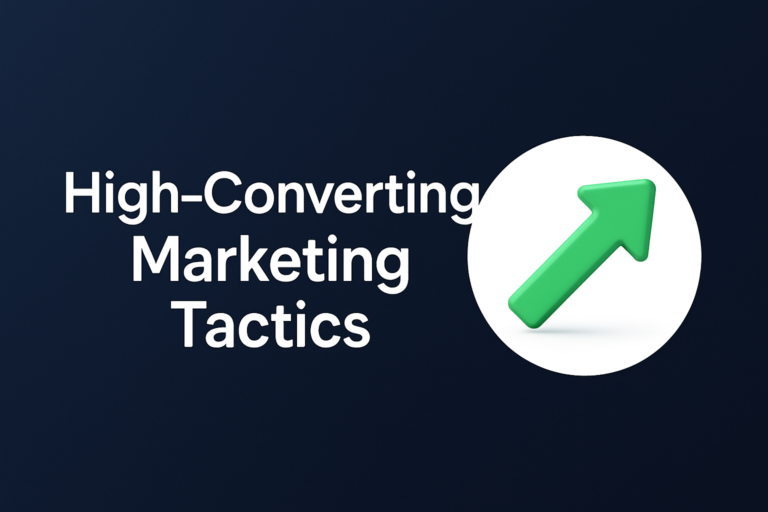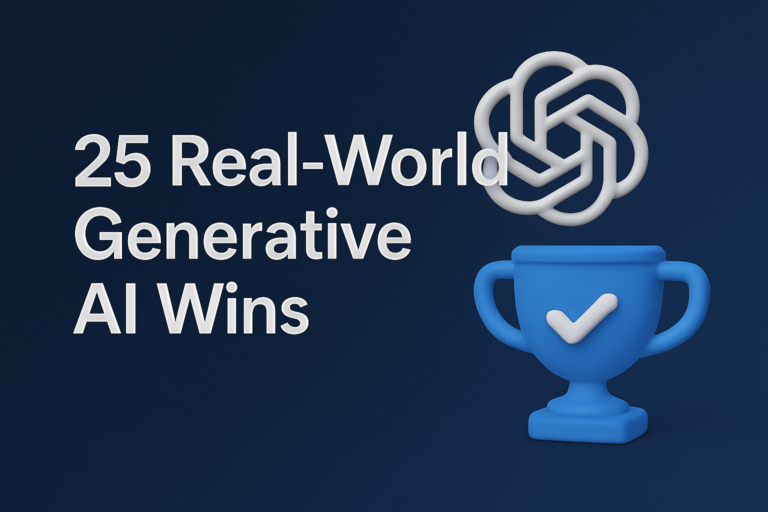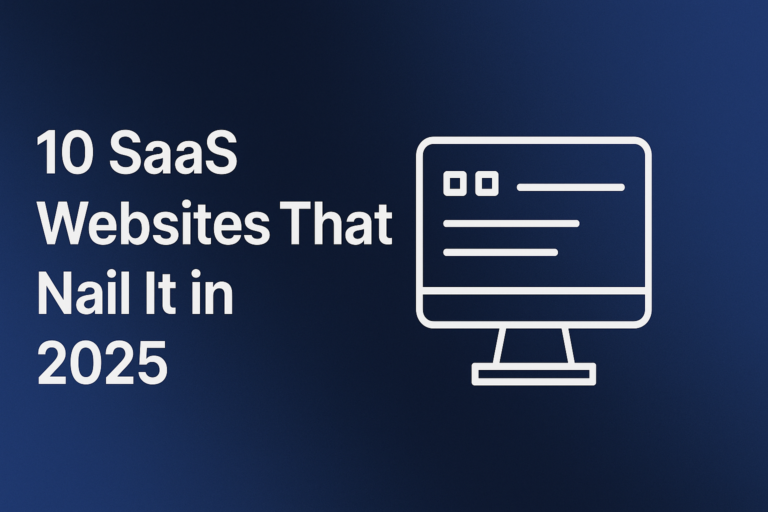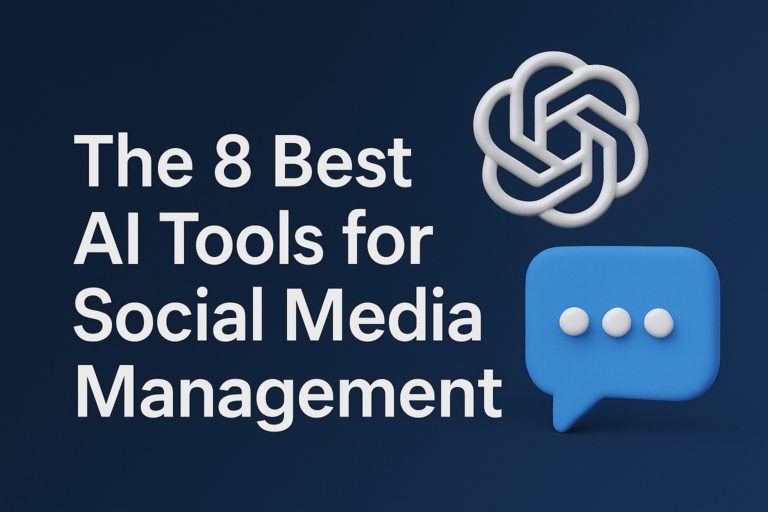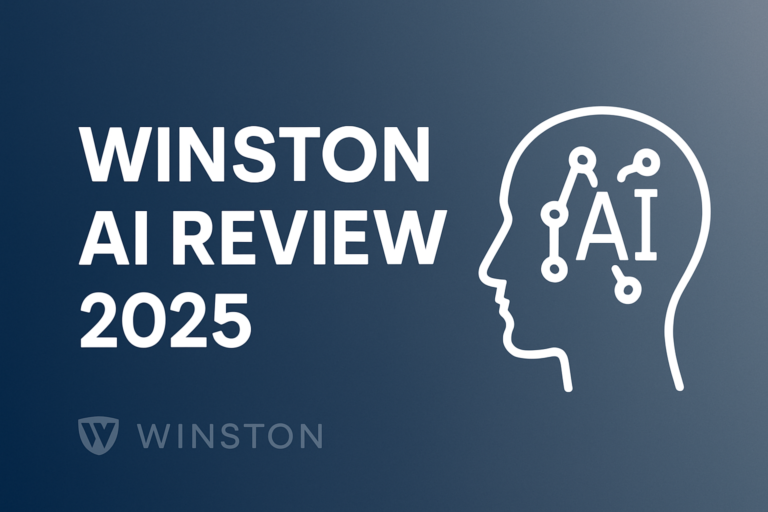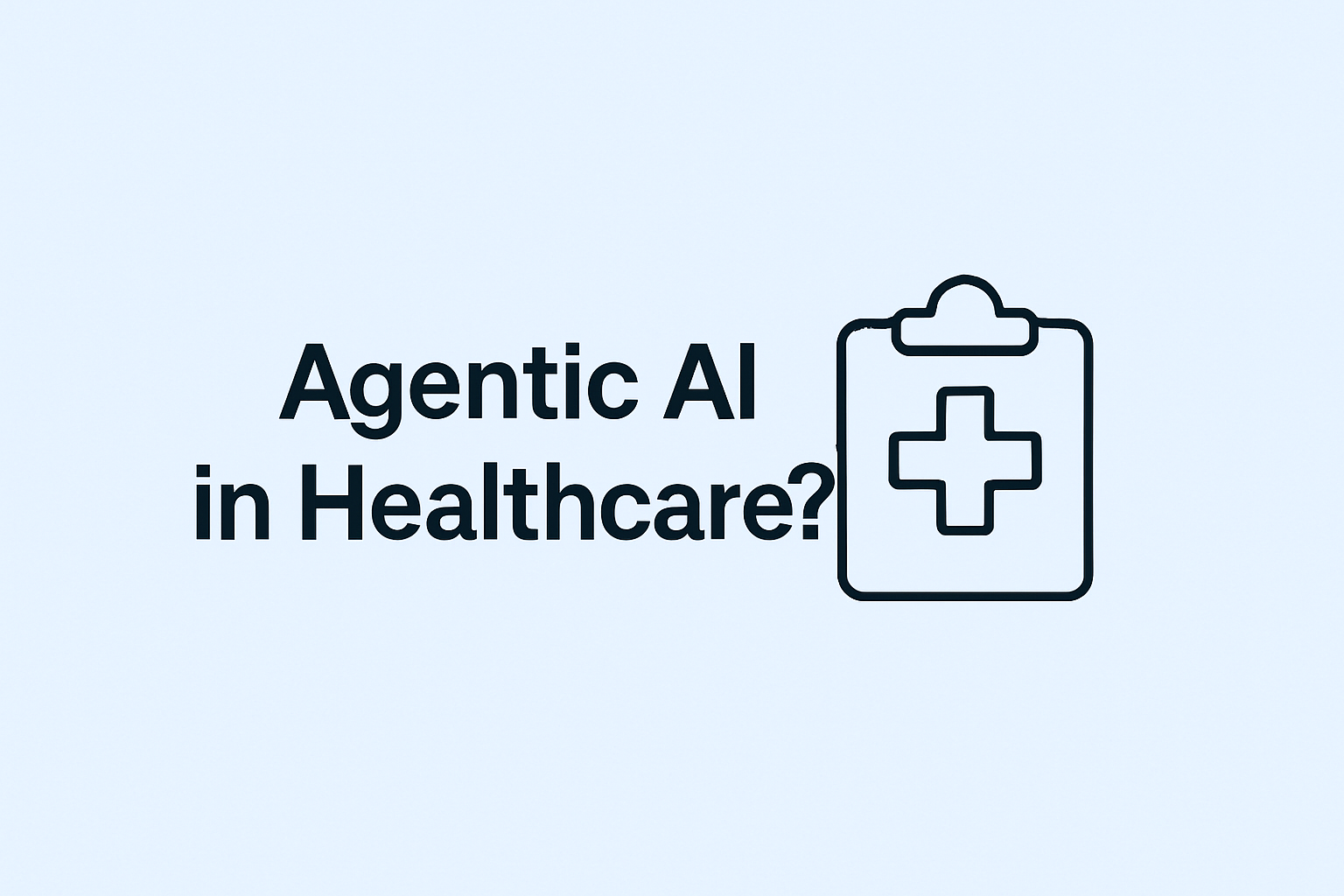How to Create an AI Marketing Strategy That Makes a Difference
Let’s be real. When people hear “AI marketing,” they picture chatbots and maybe some tool that spits out email subject lines. Sure, those are useful. But let’s not kid ourselves. That’s the shallow end of the pool.
Real ai driven marketing? It’s a full shift in how you think, plan, and move. It’s not about adding AI to your workflow. It’s about rebuilding your ai marketing strategy around it. Every part of it. And when that shift happens, you improve campaigns that give transformative outcomes.
Because here’s the truth: AI doesn’t just help you go faster. It helps you go smarter. It sees what’s working before you do. It knows your audience better than your gut ever could. And it lets you scale personalization in a way that feels real. Not robotic. If your goal is growth that actually lasts, you can’t afford to sit this one out. And once you begin, you’ll wonder how you ever marketed without it.
What Is an AI Marketing Strategy, Really?
Think of your current marketing like a paper map. Useful, but limited. Now imagine swapping it for GPS that updates in real time, reroutes you on the fly, and learns where you like to stop for coffee. That’s what AI does for your strategy. It takes you from reactive to proactive, from generic to hyper-relevant. And instead of navigating with guesswork, you’re steering with certainty.
We’re talking about machine learning, language processing, and predictive data. These tools make your campaigns hit harder. AI marketing strategies help you know what your audience is going to do before they do it. And that changes everything. From crafting content to building offers, every decision starts from real data not opinion.
And no, you don’t need a PhD. You need the right mindset. Start thinking of how to use AI in marketing as your behind-the-scenes power player that is quiet, smart, and working 24/7. Using AI doesn’t replace your skills. It multiplies them.
Why Even Bother With AI? What’s In It for You?

Here’s what an AI-powered strategy unlocks:
• Less busywork: Let AI take over repetitive stuff so your brain stays focused on real strategy.
• Faster decisions: AI spots trends and drops signals you would’ve missed.
• More impact: Better targeting means better ROI, period.
• More personalization: Tailored experiences that drive actual connection, not just conversions.
• Always-on learning: AI never sleeps. It constantly optimizes in the background.
You don’t just save time. You reclaim your energy. And instead of hoping a campaign works, you’ll know it will, because you’ve got the data to back it. That’s why ai driven marketing is reshaping what effective campaigns look like.
The Four Core Elements of AI Marketing (You Need All Four)
Let’s break this down. These aren’t optional. They’re your non-negotiables. This is how to design an ai marketing strategy that actually scales.
1. Data That Actually Tells You Something
You can’t feed your AI junk and expect it to spit out gold. You need high-quality behavior data—what people click, how long they stay, what they scroll past. AI thrives on this stuff. With the right inputs, it can show you patterns, forecast outcomes, and highlight leaks in your funnel. The better your data, the more actionable your strategy becomes. This is where a lot of brands fall flat. They collect too much data, but don’t connect it to anything useful. Your goal is relevance, not noise.
2. Segmentation That Goes Way Beyond “Age 25–34”
AI doesn’t do lazy. It creates micro-segments based on how people behave, not just who they are on paper. Maybe one group responds to urgency. Another likes social proof. AI figures that out and adjusts your content to fit. Automatically. These segments shift and evolve as behaviors change, meaning your campaigns stay agile without manual updates.
3. Personalization That Feels Natural
Forget “Hey [First Name].” We’re talking real personalization. AI can serve up different product recommendations, timing, and copy based on what someone just did on your site. It learns and adapts, so the message feels custom every time. The result? Higher engagement, deeper trust, and more conversions without sounding like a bot wrote it.
4. Automation That Doesn’t Feel Robotic
Chatbots, triggered emails, lead scoring. AI takes care of these things so you can stay focused on the big picture. When trained and personalized AI can sound like like you. It can reflect your tone, your brand, your voice. That’s where the magic is. The smartest automation feels human. It speaks your language, reacts to context, and does it all at scale. These are foundational practices in any strong marketing strategy ai setup.
How to Plug AI Into Your Strategy (Without the Overwhelm)
Let’s keep it real simple.
Step 1: Audit What You’ve Got
Where are the bottlenecks? What’s taking up too much time? What’s inconsistent? Find the pain points first. That’s where AI makes its entrance. This step often reveals gaps you didn’t even know existed like emails that only work for one segment, or ads that perform great but only at 3pm. Let ai driven marketing help you close those gaps.
Step 2: Start Small
Pick one thing to automate. One audience to segment better. One piece of content to personalize. Test it. Watch the data. Iterate. You’re not trying to overhaul everything at once. You’re building a smarter layer into what already works.
Step 3: Choose Tools That Don’t Fight Your Stack
You don’t need to switch everything. Use platforms that play well with what you already have. Go with Copy.ai, HubSpot, Salesforce. Keep in mind that If your tools make life harder, you’re doing it wrong. Take this approach when you’re figuring out how to design an ai marketing strategy to avoid unnecessary headaches.
Step 4: Optimize and Let AI Learn
Feed it results. Let it adjust. Make AI part of your team. Track the right KPIs and keep fine-tuning. AI is only as powerful as your feedback loop. Set review checkpoints monthly. Keep your model hungry for better data. It will eventually help you use ai for marketing at scale.
Best Practices to Keep Your AI Strategy Sharp
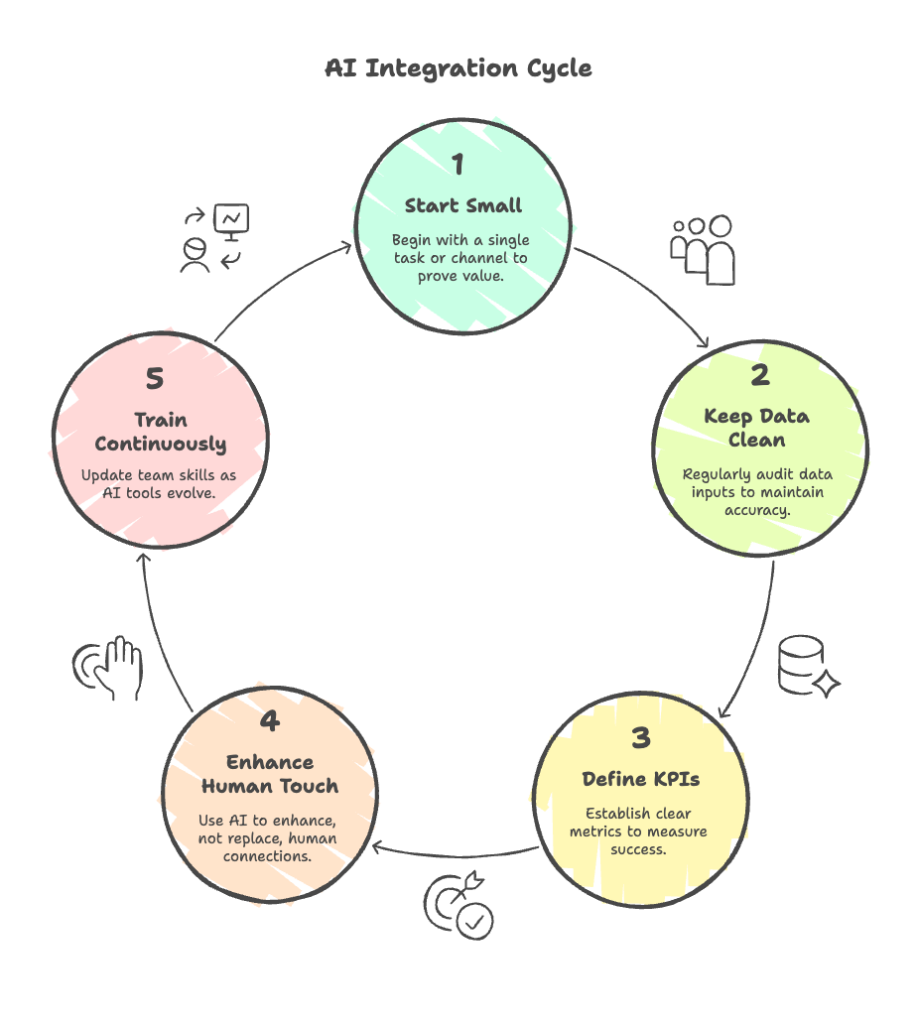
• Don’t go too big too fast—let quick wins build momentum.
• Keep your data clean—AI can’t think straight on bad inputs.
• Define your metrics up front—clarity beats chaos.
• Get the whole team aligned—this isn’t just a “marketing thing.”
• Keep humans in the loop—AI is the engine, not the driver.
• Regularly reassess what’s working—and what’s not.
• Document what you learn—so every test builds toward better decisions.
This is where ai marketing strategies really begin to outperform traditional campaigns—when best practices compound.
Common Pitfalls to Watch Out For
• Thinking AI = autopilot. It’s not.
• Using bad or outdated data—it will burn you.
• Throwing in tools without a plan—it gets messy fast.
• Forgetting to check in—AI needs attention to stay smart.
• Letting the tech lead the message—strategy should drive, not follow.
Understanding how to use ai in marketing also means knowing what not to do.
Tool Stack You’ll Want to Explore
• Analytics: Google Analytics, Hotjar, Mixpanel—great for surfacing behavior trends.
• Learning: MAICON, Coursera, Udemy—stay sharp, stay current.
• Execution: Copy.ai, Salesforce MC, Adobe Audience Manager—solid tools to build on.
• Support: Drift for AI chat, Zapier for integrations, Segment for tracking.
More and more companies use ai for marketing with this kind of tool stack—it’s powerful, flexible, and scalable.
FAQs
Is this only for big companies?
Not at all. AI helps lean teams punch above their weight.
Can AI really do personalization better than I can?
Yes—because it works off behavior, not assumptions.
Do I need a developer?
Not for most tools. If you can use Canva, you can handle this.
How soon will I see results?
Usually within weeks. Small improvements stack fast.
Here’s the Bottom Line
AI driven marketing is the new standard. If you want to stay relevant, win attention, and drive growth. You don’t need to know everything. You just need to start. Because while others are still talking about AI, you’ll be using it to drive results that actually show up in your bottom line.
Let AI work behind the scenes. You just focus on building something worth seeing.


